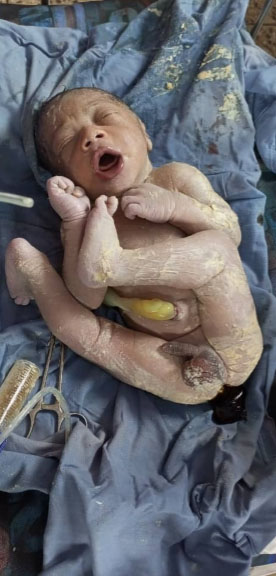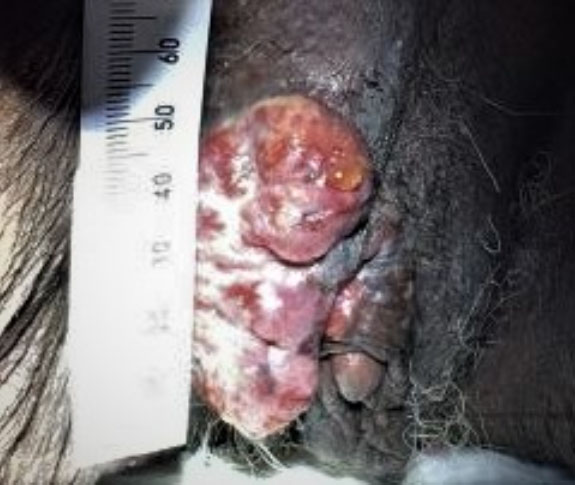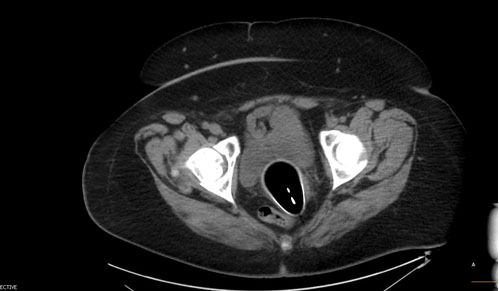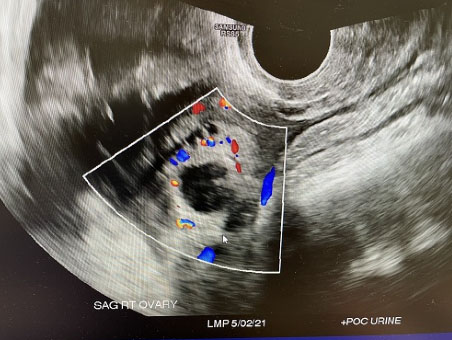 |
Case Report
Two true umbilical knots with good fetal outcome: A case report
1 Senior Registrar, Obstetrics and Gynaecology, ESUT Teaching Hospital, Enugu, Enugu State, Nigeria
2 Consultant Obstetrician and Gynaecologist, ESUT Teaching Hospital, Enugu, Enugu State, Nigeria
3 Fellow WACS, Obstetrics and Gynaecology, ESUT Teaching Hospital, Enugu, Enugu State, Nigeria
4 Registrar, Obstetrics and Gynaecology, ESUT Teaching Hospital, Enugu, Enugu State, Nigeria
5 Registrar, Paediatrics, University of Nigeria Teaching Hospital, Ituku-Ozalla, Enugu State, Nigeria
Address correspondence to:
Malachy Nwaeze Ezenwaeze
Enugu, Enugu State,
Nigeria
Message to Corresponding Author
Article ID: 100113Z08ME2022
Access full text article on other devices
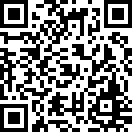
Access PDF of article on other devices
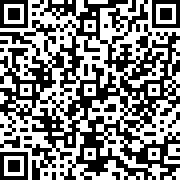
How to cite this article
Ezenwaeze MN, Nweze SO, Odugu BU, Ofor I, Chukwubuike ON, Ezenwaeze CN. Two true umbilical knots with good fetal outcome: A case report. J Case Rep Images Obstet Gynecol 2022;8:100113Z08ME2022.ABSTRACT
True knot of the umbilical cord is a rare occurrence with 4–10 fold increased risk of stillbirth. Infants with umbilical cord true knots often suffer extents of hypoxia in their prenatal course, which may cause fetal distress or even intrauterine death. We report a rare case of two true knots of the umbilical cord that was observed in a very stable male fetus following caesarean delivery for breech presentation. Even though prenatal diagnosis of a true umbilical cord knot could be difficult, we recommend high index of suspicion, routine Doppler study of the umbilical cord especially in patients at risk of true knot formation and adequate intrapartum monitoring to ensue good pregnancy outcome.
Keywords: Caesarean delivery, Good fetal outcome, True knots, Umbilical cord
Introduction
True knot of the umbilical cord usually follows fetal passage through a loop of a cord. It is a rare occurrence [1], with 4–10 fold increased risk of stillbirth [2].
Single true knot of the umbilicus is very rare and the incidence is documented to be between 0.3% and 2% of pregnancies. The findings of two (2) true knots in the umbilical cord of our index case with good fetal outcome are more astonishing because any form of disorder in the umbilical cord can be life-threatening to the fetus.
It is generally considered that true knots of the umbilical cord occur in early gestation (between 9 and 12 weeks) when the overall amniotic fluid volume is considerably larger than the fetus [3].
Predisposing factors in the formation of true knots of the umbilical cord include: long umbilical cords, polyhydramnios, excessive fetal movements, gestational diabetes, multiparity, male fetus, small sized fetus, chronic hypertension [4], and interestingly, patients who have undergone genetic amniocentesis [5]. Generally, the average length of the umbilical cord is about 55 cm, and any length more than 80 cm is regarded to be unduly long and capable of causing cord entanglement [2].
Wharton’s jelly ordinarily surrounds the umbilical cord and reduces the probability of collapse of vessels. In event of loss of this protection as noted with true knots, the umbilical cord may tighten leading to decrease or abrupt cessation of blood flow resulting to intrauterine fetal demise [6],[7]. In Nnamdi Azikiwe University Teaching Hospital Nnewi, South-East Nigeria, a case of true single umbilical knot leading to fetal demise was reported [8].
Here, we present a case of a male fetus that had a good outcome following caesarean delivery on account of frank breech presentation with an incidental finding of two true knots in the umbilical cord that measured 110 cm.
Case Report
Our patient is Mrs. M.A, a booked 22-year-old G2p1A1. Her last normal menstrual period was on 28th November, 2020 and based on her regular 28th day cycle and non-use of hormonal oral contraceptive, her expected date of delivery (EDD) was on 5th September, 2021.
Pregnancy was desired, spontaneously conceived and confirmed with an abdominal ultrasound. She booked for antenatal care in ESUT Teaching Hospital at a gestational age of 12 weeks, prior to booking and at booking she had no complaint. Her booking weight was 70 kg, height was 1.6 m, and blood pressure was 110/70 mmgH. Her Hepatitis B surface antigen (HBsAg), venereal disease research laboratory (VDRL), and human immunodeficiency virus (HIV) 1 and 2 tests were not reactive. Her blood group was O Rhesus D positive, hemoglobin genotype was AA, and packed cell volume was 34%. She slept under insecticide treated net, was compliant with her routine antenatal drugs, and received two doses each of intermittent preventive therapy for malaria and tetanus toxoid at 22 and 26 weeks of gestation respectively. She was not a known hypertensive or diabetic patient and pregnancy progressed uneventfully until at 36 weeks when it was noted that her fetus was in breech presentation and routine 36 weeks ultrasound confirmed frank breech presentation of the fetus. She was subsequently counseled on options of management of her condition. She chose an elective caesarean delivery which she had at 38 completed weeks of gestation. The outcome was a live male neonate who cried immediately with Apgar scores of 8 and 10 in the 1st and 5th minutes of live respectively, birth weight was 3.4 kg.
Unsuspected findings of two (2) true knots of the umbilicus at 6 cm apart were noted 9 cm distal to cord attachment to the fetus (Figure 1). The umbilical cord length was measured and found to be 110 cm; no other fetal anomaly was noted. Baby remained stable postpartum without any reason for neonatal intensive care unit admission or institution of any medical treatment (Figure 2).
Discussion
True knots of the umbilicus are more likely to be detected when they are checked for especially when risk factors exist [9],[10]. Specifically, 4-dimensional color Doppler and power Doppler examination are the most important modalities for assessment and diagnosis of true knot [11]. Cloverleaf pattern [7] or hanging noose [2] may be seen incidentally.
Hence, scholars suggest that effort at prenatal diagnosis should be made especially when the suspicion or risk factor for the diagnosis exist [12].
Our patient had prenatal ultrasound investigation during antenatal care visits and at 36 weeks gestation, however the knots were missed.
Díaz de la Noval et al. observed that prenatal diagnosis of true knot umbilical cord is an exceptional and unexpected event that shouldn’t change planned obstetric approach [7].
However, other researchers consider caesarean delivery more appropriate to ensure good outcome [10]. They argued that in the course of labor and passage of fetus through the birth canal, the knots can tighten and fetal circulation may be compromised [9].
Our patient was offered caesarean delivery on account of frank breech presentation with an incidental finding of two true knots. This intervention (caesarean delivery) may be responsible for the good fetal outcome observed.
Conclusion
Given the association of true knot of the umbilical cord and 4–10 fold increased risk of stillbirth, high index of suspicion, routine Doppler study of the umbilical cord especially in patient with high risk of true knot formation and adequate intrapartum monitoring are recommended to avert disservice to our patients and their fetuses.
REFERENCES
1.
Airas U, Heinonen S. Clinical significance of true umbilical knots: A population-based analysis. Am J Perinatol 2002;19(3):127–32. [CrossRef]
[Pubmed]

2.
Sherer DM, Amoabeng O, Dryer AM, Dalloul M. Current perspectives of prenatal sonographic diagnosis and clinical management challenges of true knot of the umbilical cord. Int J Womens Health 2020;12:221–33. [CrossRef]
[Pubmed]

3.
Hershkovitz R, Silberstein T, Sheiner E, et al. Risk factors associated with true knots of the umbilical cord. Eur J Obstet Gynecol Reprod Biol 2001;98(1):36–9. [CrossRef]
[Pubmed]

4.
Suzuki S. Excessively long umbilical cord: A preventive factor of miserable outcomes of pregnancies with true umbilical cord knots. J Matern Fetal Neonate Med 2020;33(22):3757–60. [CrossRef]
[Pubmed]

5.
Linde LE, Rasmussen S, Kessler J, Ebbing C. Extreme umbilical cord lengths, cord knot and entanglement: Risk factors and risk of adverse outcomes, a population-based study. PLoS One 2018;13(3):e0194814. [CrossRef]
[Pubmed]

6.
Khan M, Zahiruddin S, Iftikhar M. True knot of umbilical cord: Case report and review of literature. J Pak Med Assoc 2016;66(8):1037–8.
[Pubmed]

7.
Díaz de la Noval B, Llaneza IP, Sepúlveda MR, Barriendos FJF, Blanco CF. True umbilical cord knot, an emergency during labor. Clin Case Rep 2019;7(11):2242–4. [CrossRef]
[Pubmed]

8.
Ikechebelu J, Eleje G, Ofojebe C. True umbilical cord knot leading to fetal demise. Ann Med Health Sci Res 2014;4(Suppl 2):S155–8. [CrossRef]
[Pubmed]

9.
Ramón y Cajal CL, Martínez RO. Four-dimensional ultrasonography of a true knot of the umbilical cord. Am J Obstet Gynecol 2006;195(4):896–8. [CrossRef]
[Pubmed]

10.
Deutsch AB, Miller E, Spellacy WN, Mabry R. Ultrasound to identify cord knotting in monoamniotic monochorionic twins. Twin Res Hum Genet 2007;10(1):216–8. [CrossRef]
[Pubmed]

11.
Hayes DJL, Warland J, Parast MM, et al. Umbilical cord characteristics and their association with adverse pregnancy outcomes: A systematic review and meta-analysis. PLoS One 2020;15(9):e0239630. [CrossRef]
[Pubmed]

12.
True knot of umbilical cord. 2019. [Available at: https://www.dovemed.com/diseases-conditions/true-knot-umbilical-cord/]

SUPPORTING INFORMATION
Acknowledgments
The authors wish to appreciate other doctors who played some roles in writing up this manuscript.
Author ContributionsMalachy Nwaeze Ezenwaeze - Conception of the work, Design of the work, Drafting the work, Revising the work critically for important intellectual content, Final approval of the version to be published, Agree to be accountable for all aspects of the work in ensuring that questions related to the accuracy or integrity of any part of the work are appropriately investigated and resolved.
Sylvester Onuegbunam Nweze - Revising the work critically for important intellectual content, Final approval of the version to be published, Agree to be accountable for all aspects of the work in ensuring that questions related to the accuracy or integrity of any part of the work are appropriately investigated and resolved.
Boniface Uwaezuoke Odugu - Drafting the work, Revising the work critically for important intellectual content, Final approval of the version to be published, Agree to be accountable for all aspects of the work in ensuring that questions related to the accuracy or integrity of any part of the work are appropriately investigated and resolved.
Ifeanyi Ofor - Conception of the work, Design of the work, Drafting the work, Revising the work critically for important intellectual content, Final approval of the version to be published, Agree to be accountable for all aspects of the work in ensuring that questions related to the accuracy or integrity of any part of the work are appropriately investigated and resolved.
Obumneme Nkemakonam Chukwubuike - Drafting the work, Final approval of the version to be published, Agree to be accountable for all aspects of the work in ensuring that questions related to the accuracy or integrity of any part of the work are appropriately investigated and resolved.
Chibugo Ndidiamaka Ezenwaeze - Conception of the work, Design of the work, Drafting the work, Final approval of the version to be published, Agree to be accountable for all aspects of the work in ensuring that questions related to the accuracy or integrity of any part of the work are appropriately investigated and resolved.
Guaranter of SubmissionThe corresponding author is the guarantor of submission.
Source of SupportNone
Consent StatementWritten informed consent was obtained from the patient for publication of this article.
Data AvailabilityAll relevant data are within the paper and its Supporting Information files.
Conflict of InterestAuthors declare no conflict of interest.
Copyright© 2022 Malachy Nwaeze Ezenwaeze et al. This article is distributed under the terms of Creative Commons Attribution License which permits unrestricted use, distribution and reproduction in any medium provided the original author(s) and original publisher are properly credited. Please see the copyright policy on the journal website for more information.



